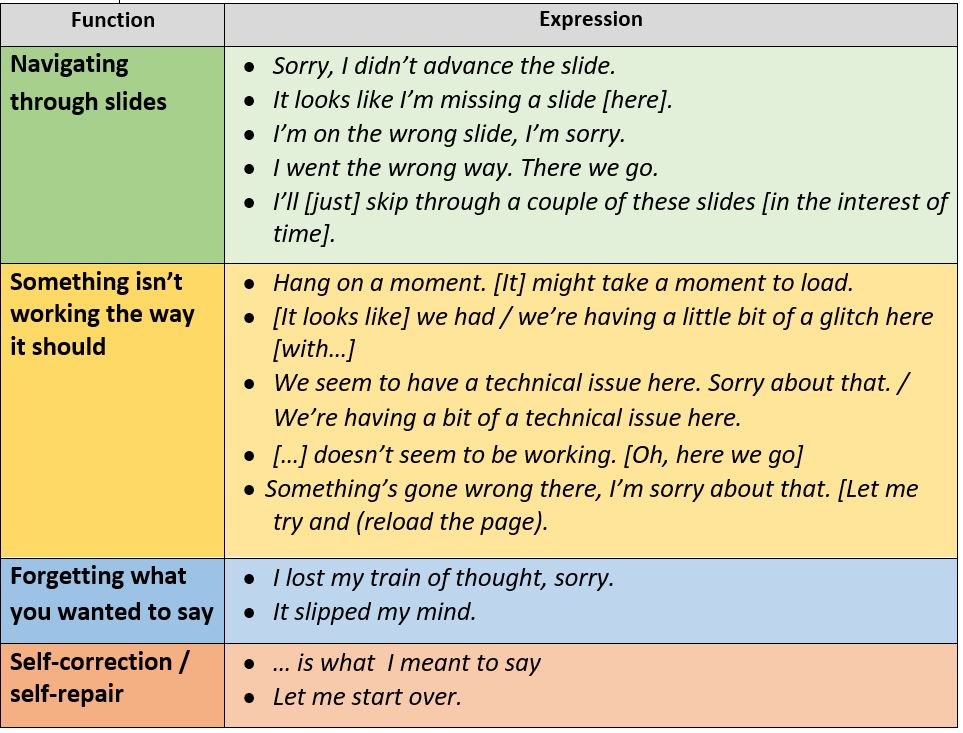# Presenting in English
By the end of the course, you will be able to :
- improve your knowledge of relevant vocabulary for presentation;
- build your communication skills for successful presentation delivery;
- give you the confidence to make effective online and face-to-face presentations in English.
# My Practice Videos
flipgrid.com (opens new window) Use Google Account to Login.
# Preparing for a presentation
Before starting a presentation, we need to make preparations.
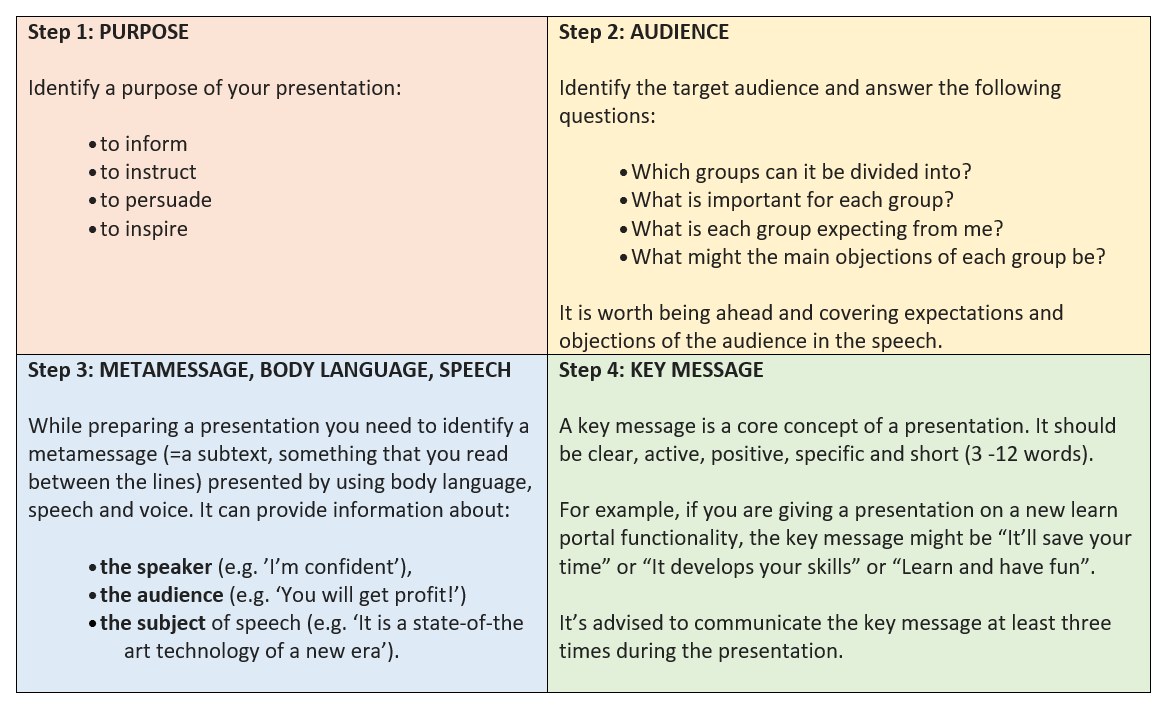
The following is a list of soft skills techniques that can provide presentation assistance.
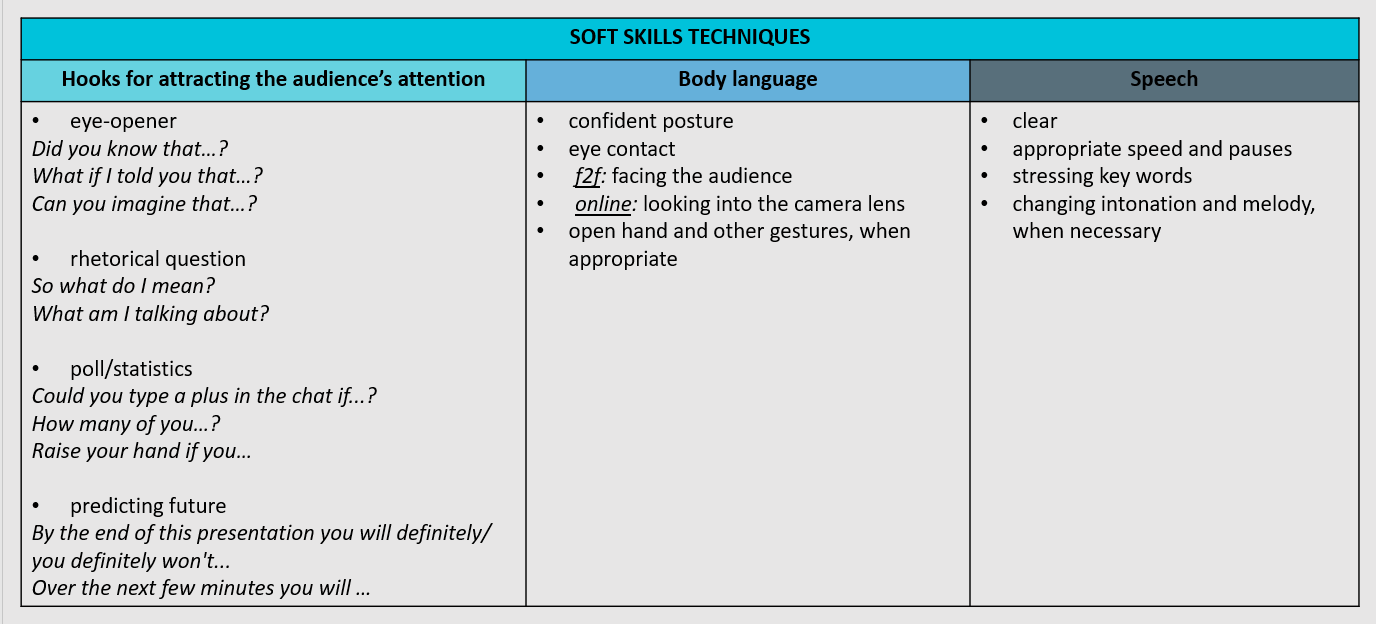
- eye-opener - a fact or information that is surprising and shows the audience something they did not know before
- poll - the process of questioning people in order to get information about the general opinion
# Opening a presentation
About the opening part, here are some functions that can be followed.
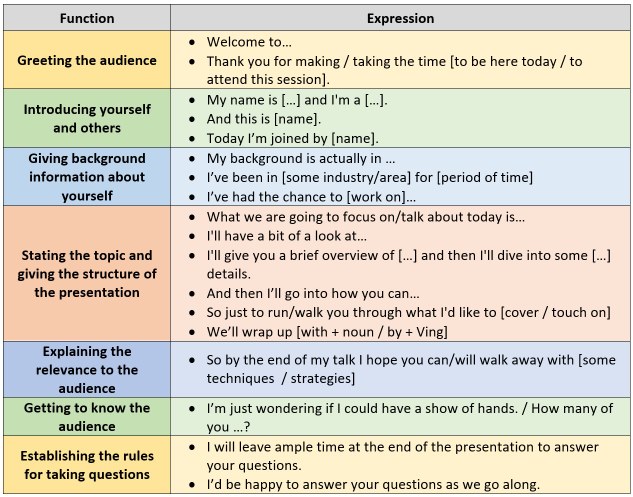
Read the presentation opening about Microsoft Teams below.

# Signposting language
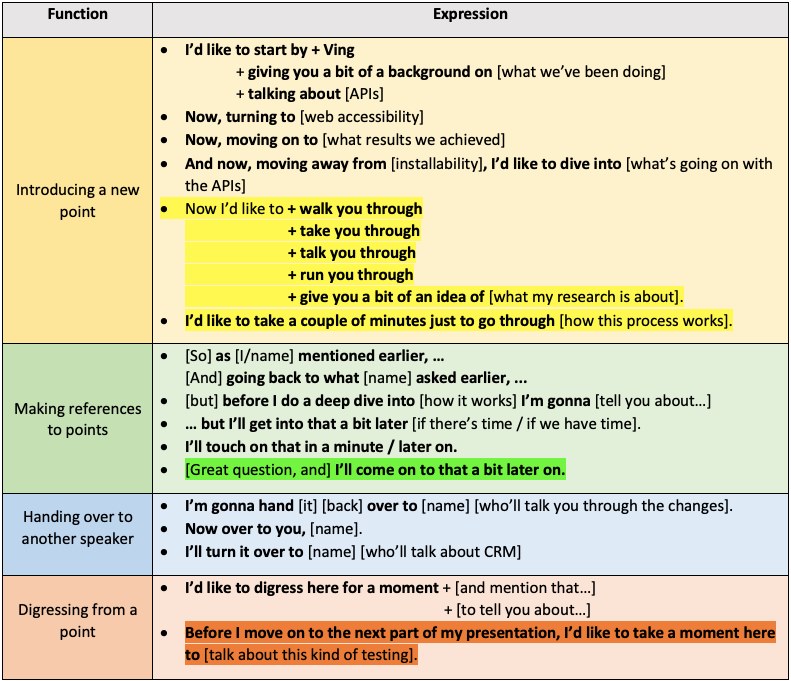
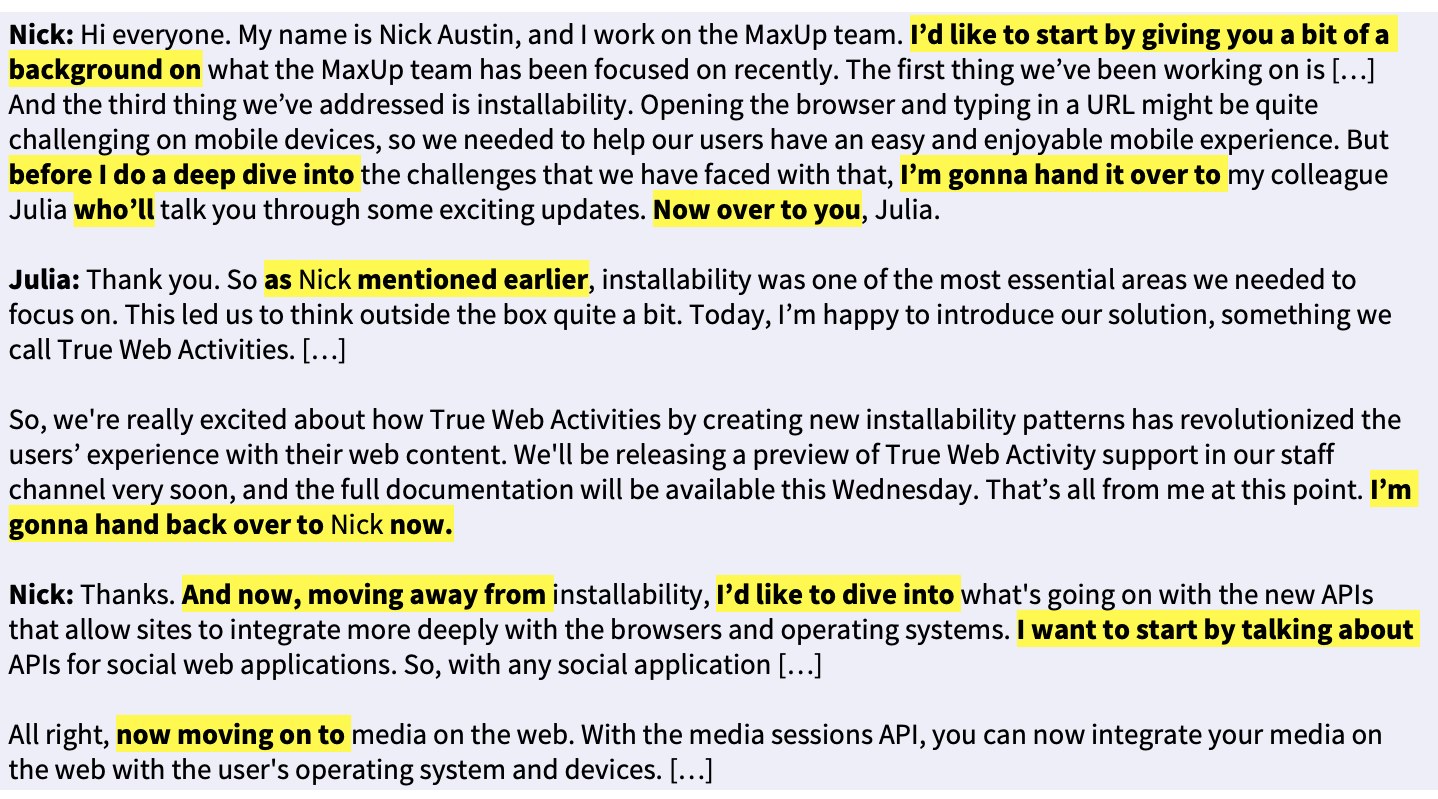
- Which phrases are used to introduce a new point in a presentation? (4 phrases)
- I'd like to start by giving you a bit of a background on...
- I'd like to dive into...
- I want to start by talking about...
- now, moving on to...
- Which phrase refers back to something already said?
- as Nick mentioned earlier, ...
- Which phrases help move to the next speaker? (3 phrases)
- I'm gonna hand it over to my colleague Julia who'll...
- Now over to you, Julia.
- I'm gonna hand back over to Nick now.
- Which phrase signals the end of one point and a shift to the next one?
- And now, moving away from installability, I'd like to dive into ...
# Closing a presentation


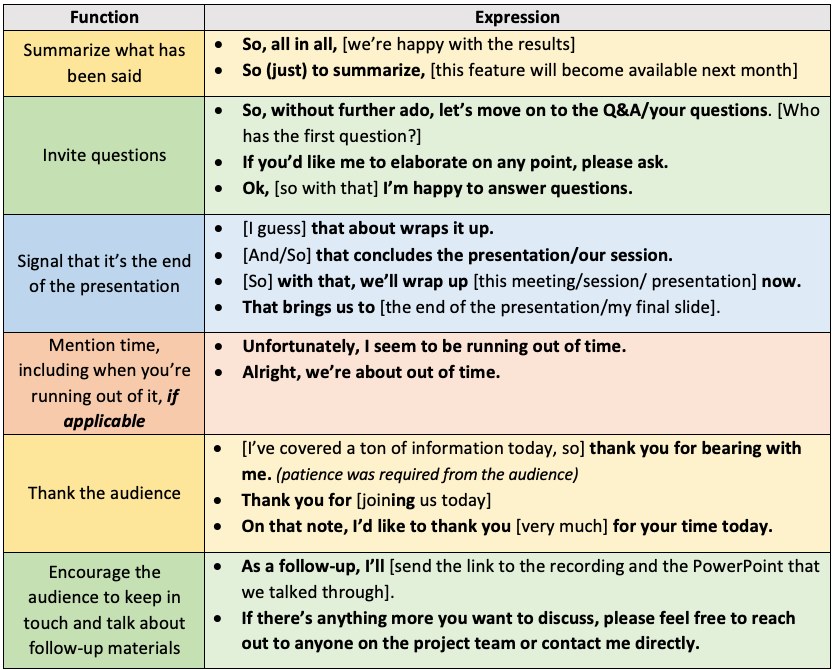
# Handling questions
Read the transcript.
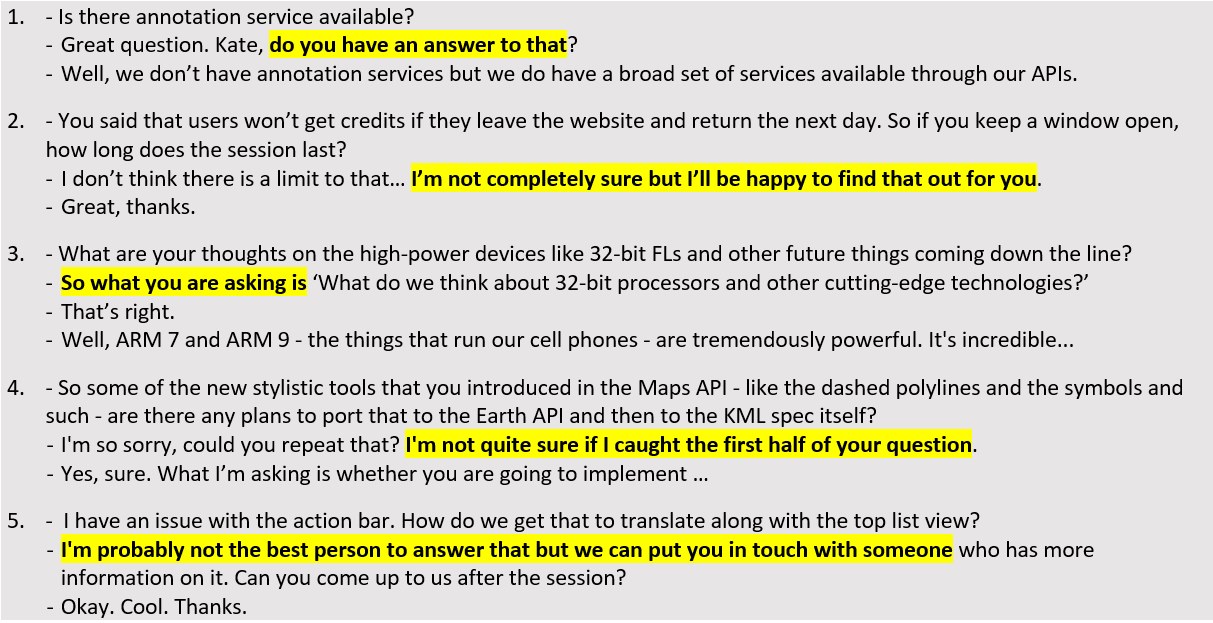
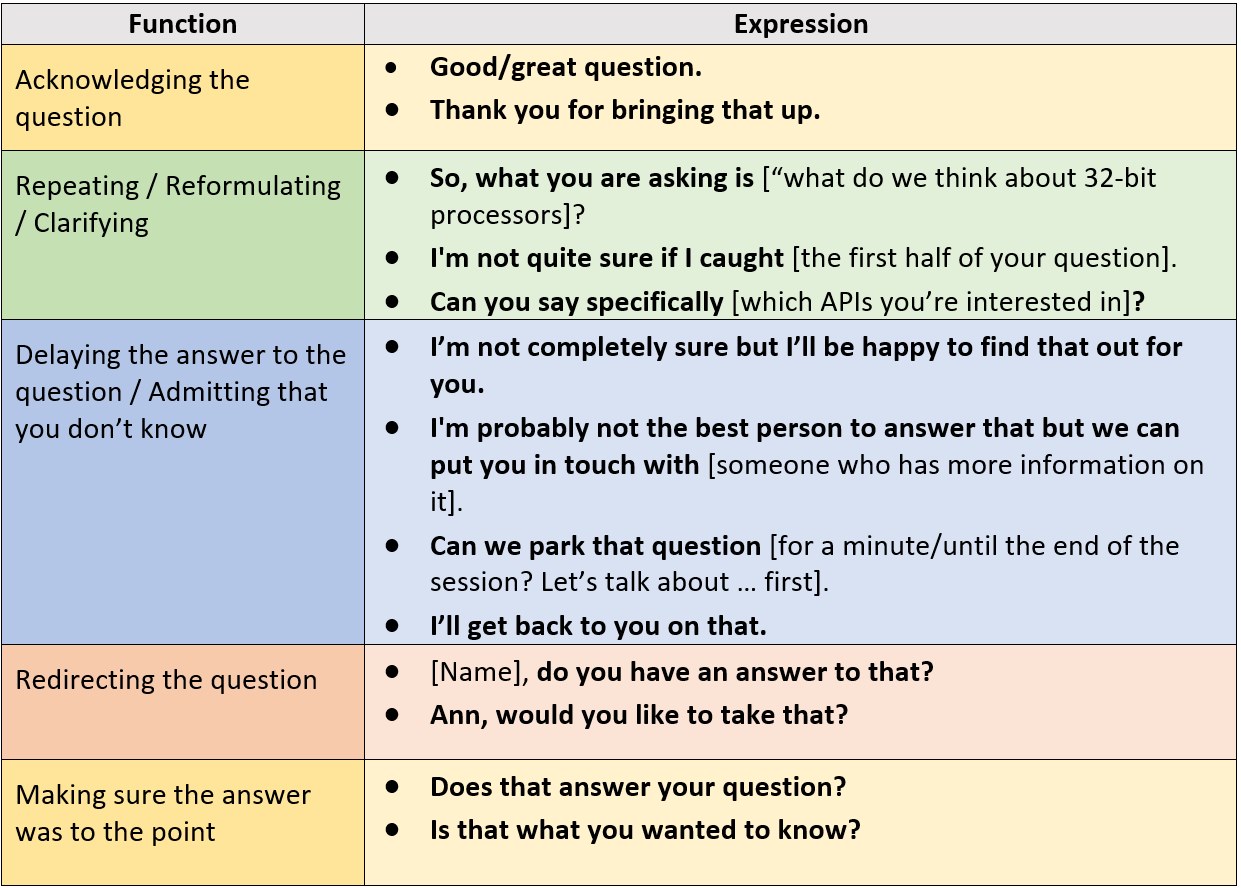
# Using your voice effectively
Aim: use pauses and stress to sound more convincing during a presentation.
- Why do speakers make pauses in presentations?
- To catch a breath, to give listeners time to process information, to emphasise important information.
- Where in the text do pauses usually take place?
- Pauses often take place at the end of a sentence or at the end of a phrase. They can also be used before and after an important point you want listeners to pay attention to. ➡️
A pause is a form of oral punctuation that helps your audience reflect on what you said. Sudden silence might have the same effect as a sudden loud noise. It makes your audience attentive to what you say next. But make sure you apply pauses appropriately in order not to sound nervous or unprepared.
# Speaking with greater impact
Aim: practice using such strategies as repetition, rhetorical questions and power words to create greater impact with your presentation.
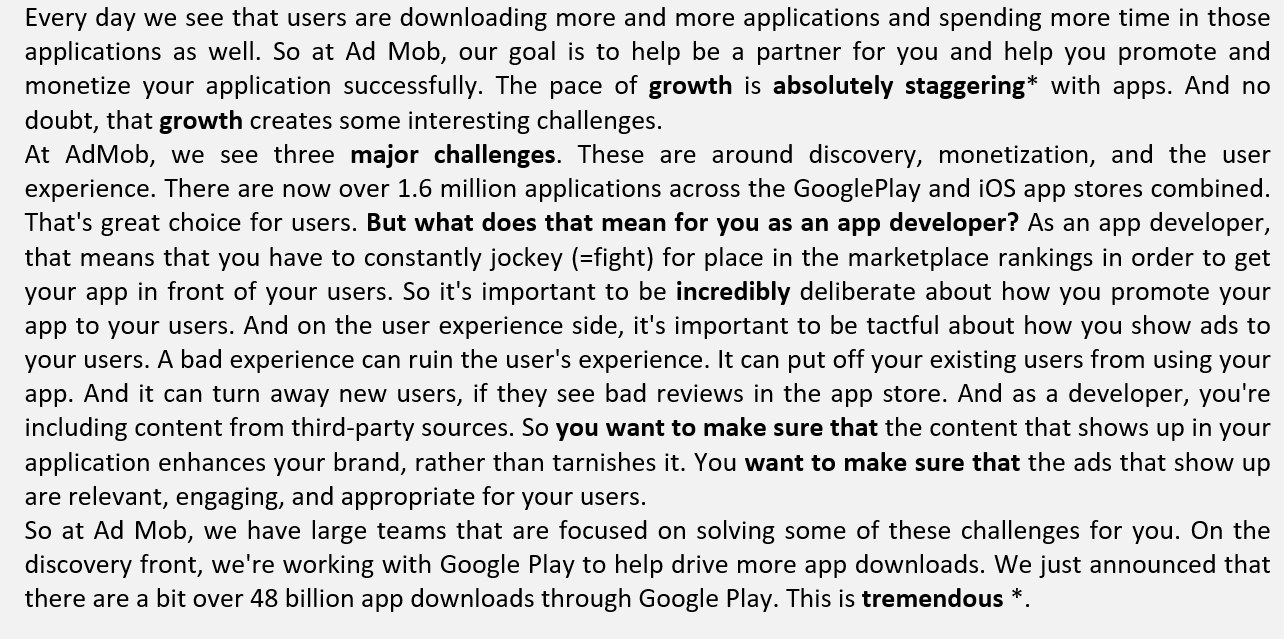
How to Look Confident
- Make eye contact
- Keep an open posture
- Use gestures
How to Sound Confident
- Eliminate filler words
- Avoid words that serve no purpose except to fill the space between sentences. These are words like um, ah, like, and the dreaded, you know? Excessive filler words can be irritating to listeners, and make speakers sound unsure of themselves. Eliminating them is also one of the simplest habits to fix.
- Take time to pause
- Vary your pace
- Eliminate filler words
# Connecting with your audience
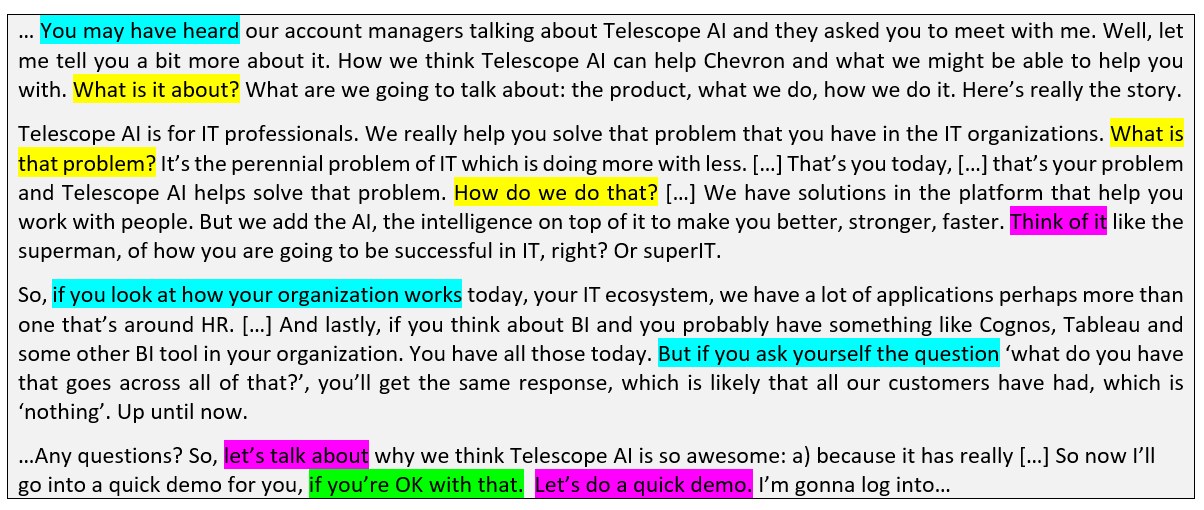
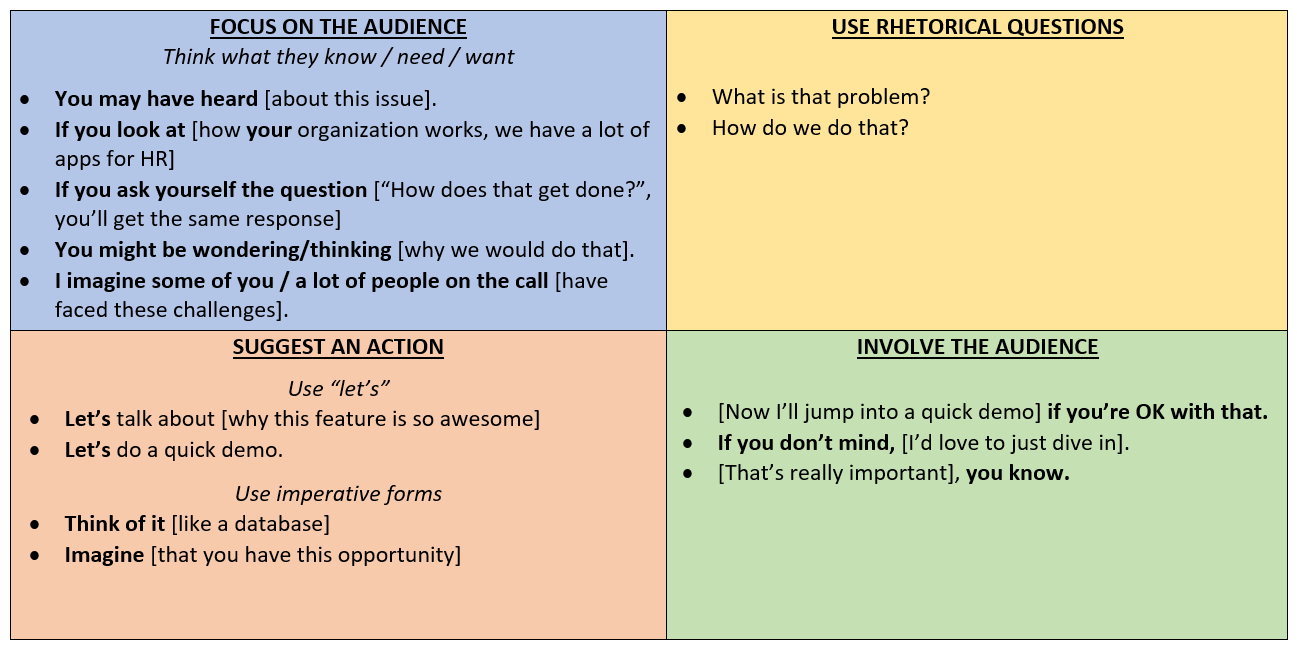
A. Read the information in the box and answer the question.
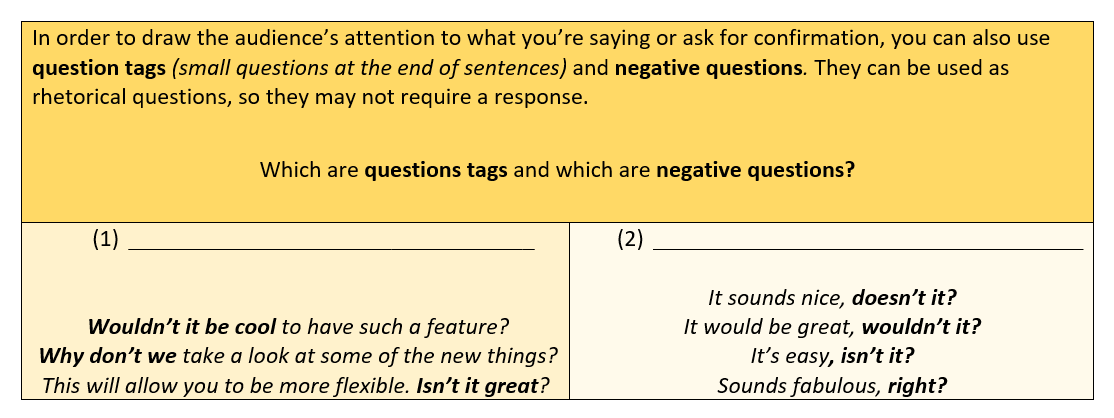
- Negative questions
- Question tags
# Linking ideas
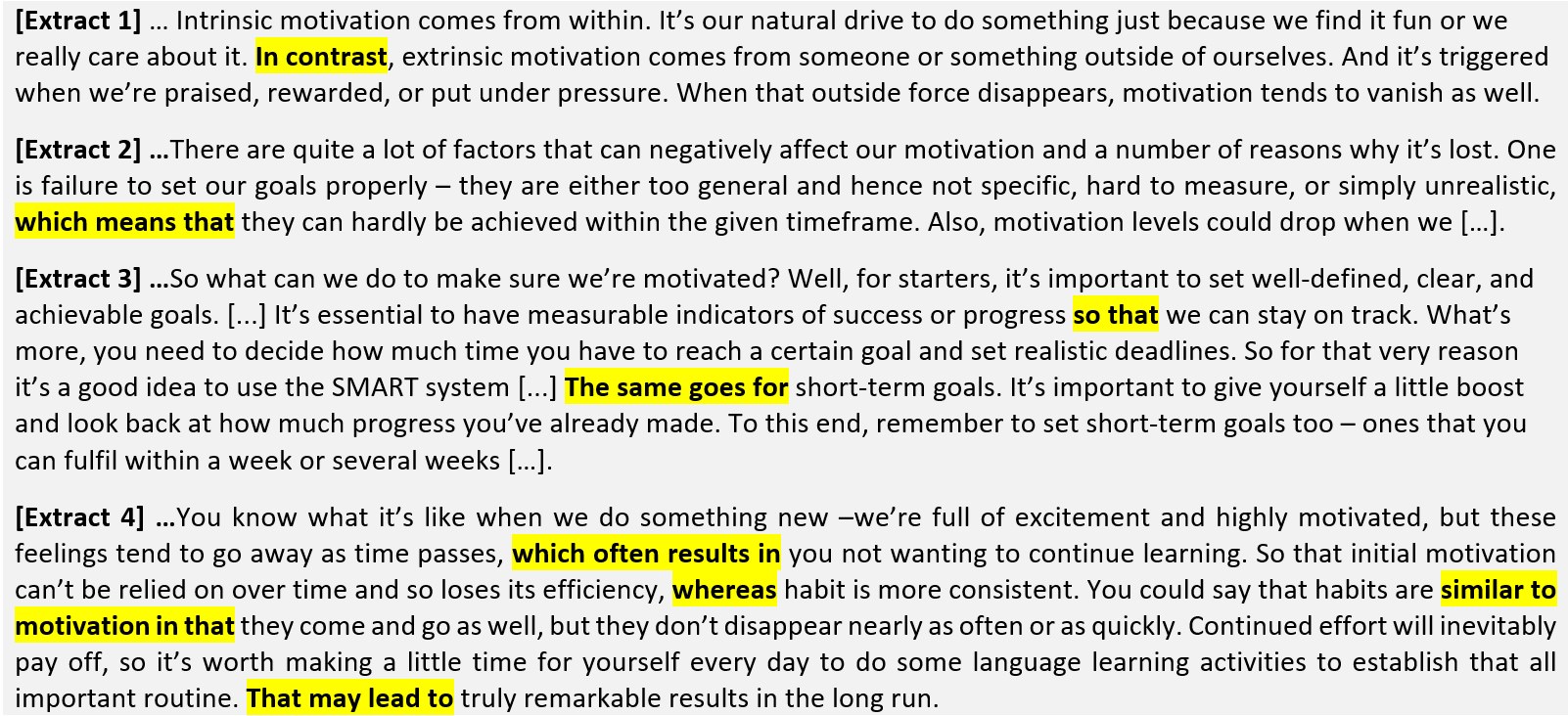
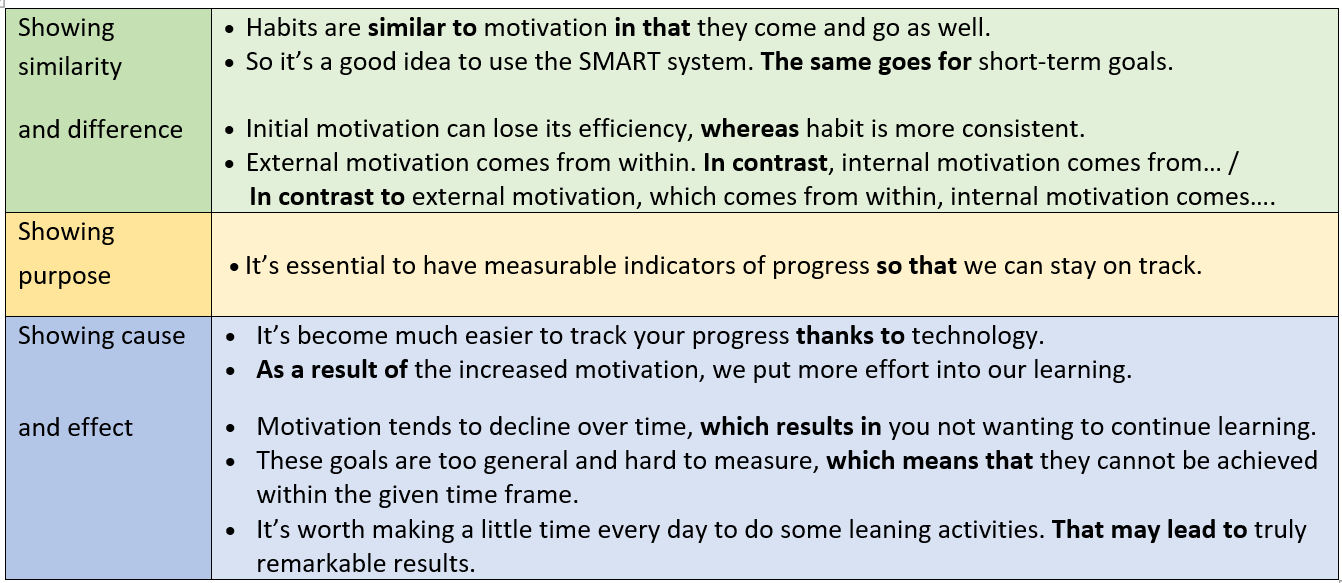
# Explaining complex ideas

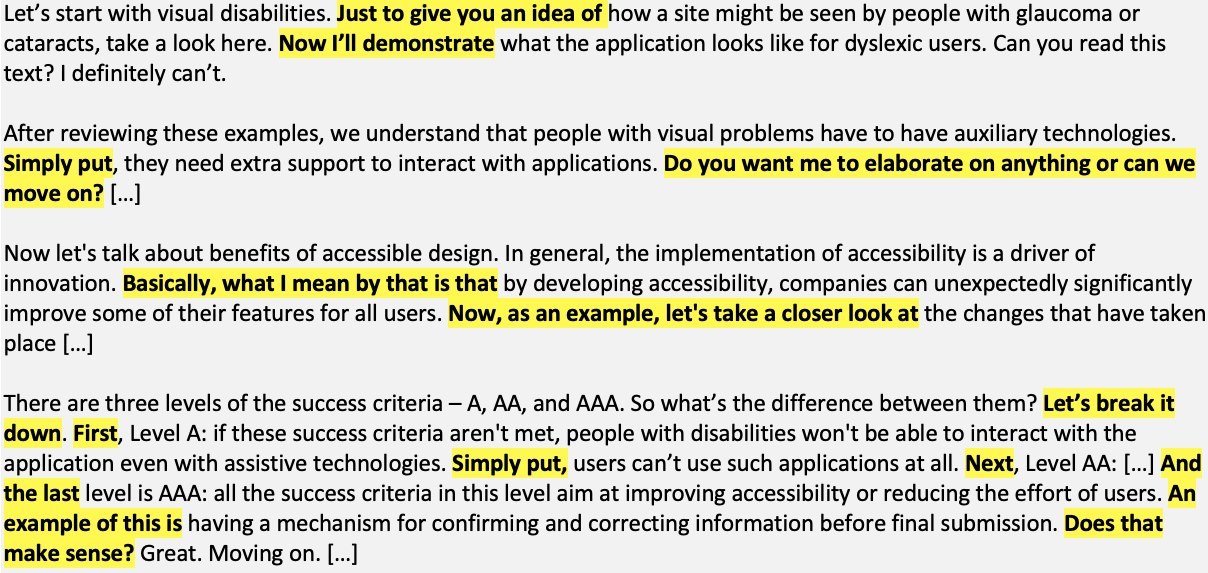
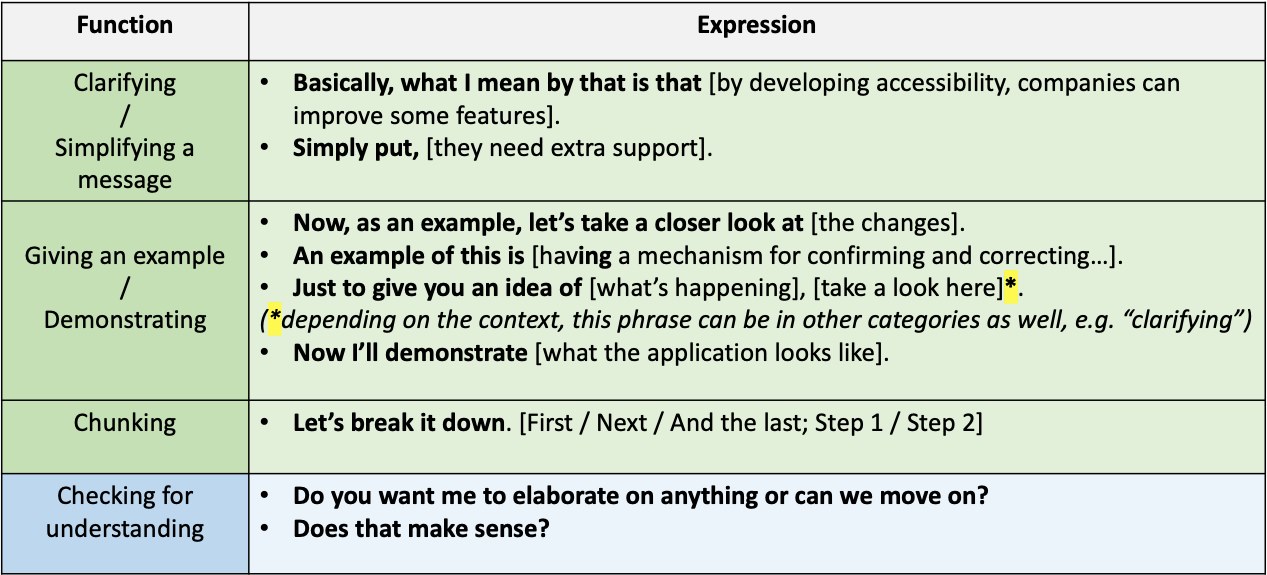
# Putting forward solutions
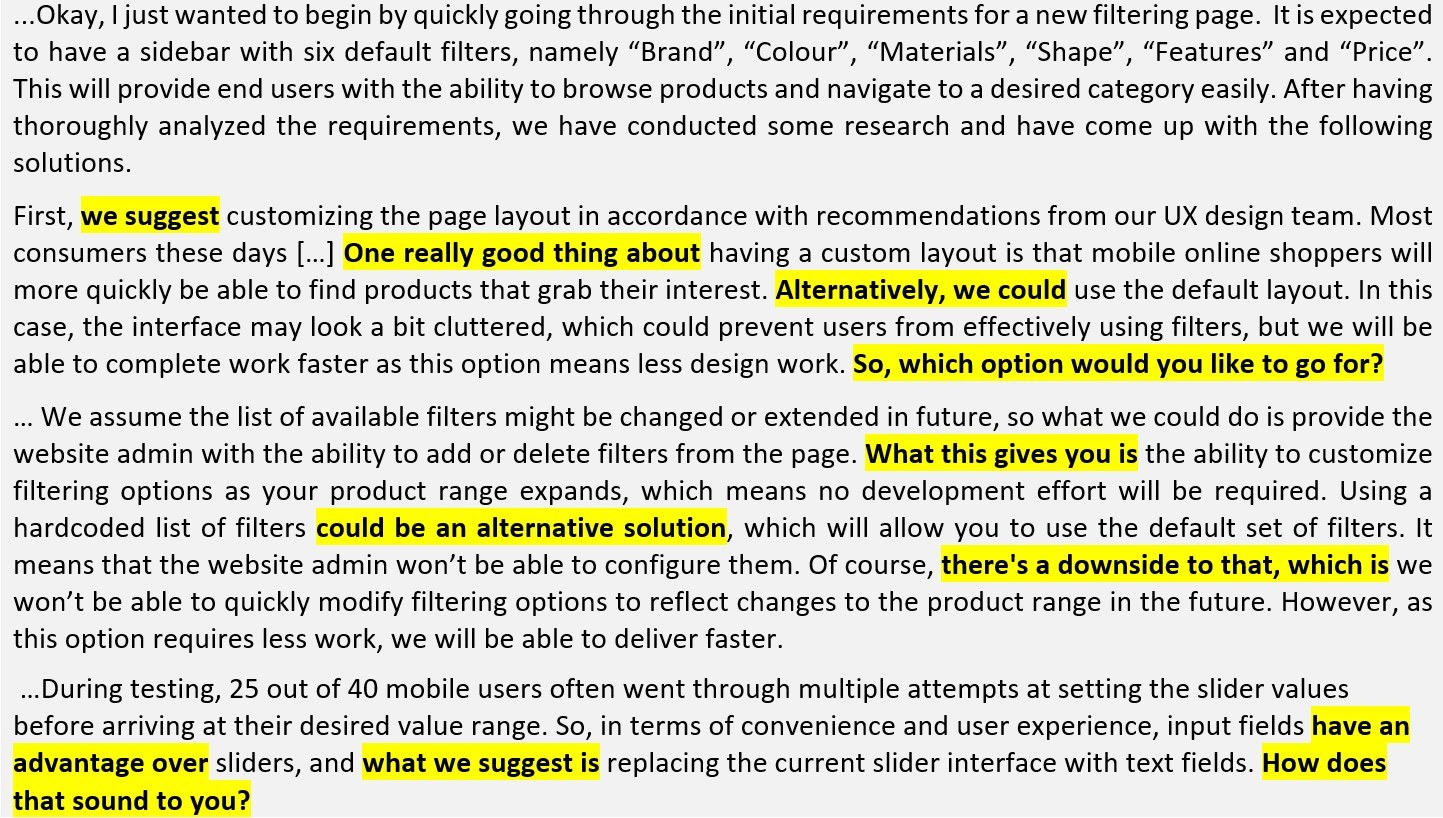
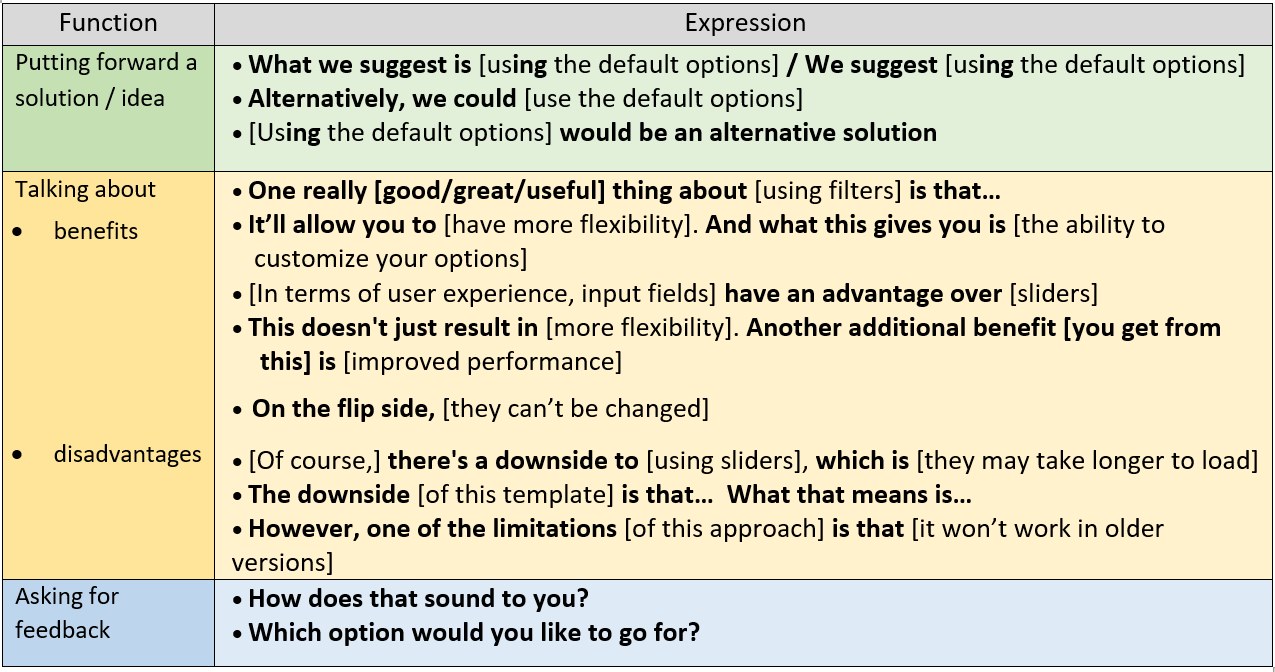
# Dealing with the unexpected
